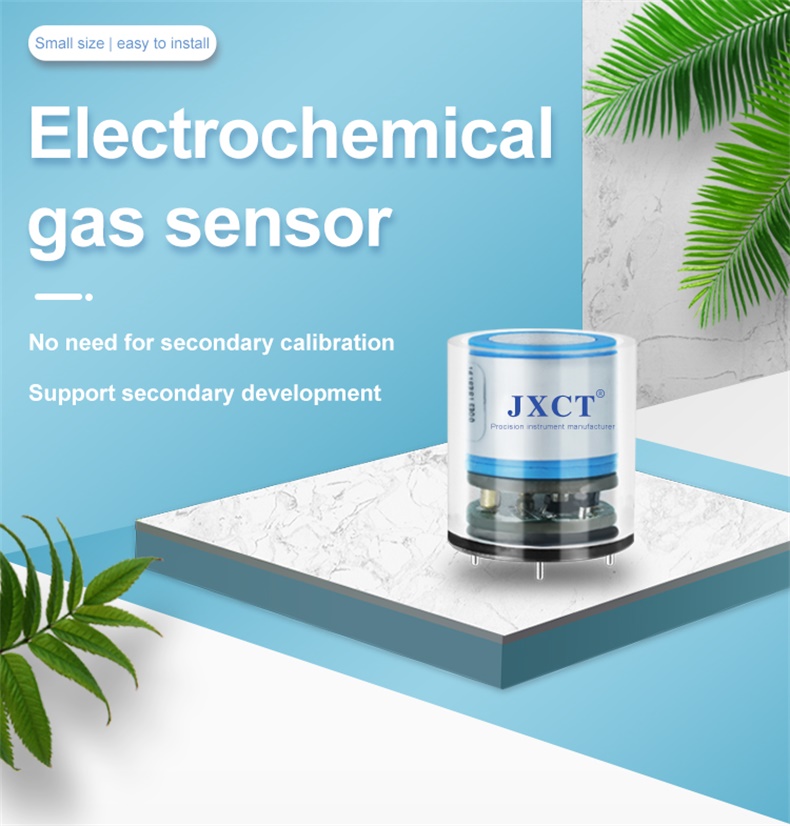Introduction
The electrochemical gas sensors contain two or three electrodes, occasionally four, in contact with an electrolyte. The electrodes are typically fabricated by fixing a high surface area precious metal on to the porous hydrophobic membrane. The working electrode contacts both the electrolyte and the ambient air to be monitored usually via a porous membrane. The electrolyte most commonly used is a mineral acid, but organic electrolytes are also used for some sensors. The electrodes and housing are usually in a plastic housing which contains a gas entry hole for the gas and electrical contacts.
Theory of operation
The gas diffuses into the sensor, through the back of the porous membrane to the working electrode where it is oxidized or reduced. This electrochemical reaction results in an electric current that passes through the external circuit. In addition to measuring, amplifying and performing other signal processing functions, the external circuit maintains the voltage across the sensor between the working and counter electrodes for a two electrode sensor or between the working and reference electrodes for a three electrode cell. At the counter electrode an equal and opposite reaction occurs, such that if the working electrode is an oxidation, then the counter electrode is a reduction.

Diffusion controlled response
The magnitude of the current is controlled by how much of the target gas is oxidized at the working electrode. Sensors are usually designed so that the gas supply is limited by diffusion and thus the output from the sensor is linearly proportional to the gas concentration. This linear output is one of the advantages of electrochemical gas sensors over other sensor technologies, (e.g. infrared), whose output must be linearized before they can be used. A linear output allows for more precise measurement of low concentrations and much simpler calibration (only baseline and one point are needed).
Diffusion control offers another advantage. Changing the diffusion barrier allows the sensor manufacturer to tailor the sensor to a particular target gas concentration range. In addition, since the diffusion barrier is primarily mechanical, the calibration of electrochemical gas sensors tends to be more stable over time and so electrochemical sensors based instruments require much less maintenance than some other detection technologies. In principle, the sensitivity can be calculated based on the diffusion properties of the gas path into the sensor, though experimental errors in the measurement of the diffusion properties make the calculation less accurate than calibrating with test gas.
Cross sensitivity
For some gases such as ethylene oxide, cross sensitivity can be a problem because ethylene oxide requires a very active working electrode catalyst and high operating potential for its oxidation. Therefore, gases which are more easily oxidized such as alcohols and carbon monoxide will also give a response. Cross sensitivity problems can be eliminated though through the use of a chemical filter, for example filters that allows the target gas to pass through unimpeded, but which reacts with and removes common interferences.
While electrochemical gas sensors offer many advantages, they are not suitable for every gas. Since the detection mechanism involves the oxidation or reduction of the gas, electrochemical gas sensors are usually only suitable for gases which are electrochemically active, though it is possible to detect electrochemically inert gases indirectly if the gas interacts with another species in the sensor that then produces a response. Sensors for carbon dioxide are an example of this approach and they have been commercially available for several years.
Cross sensitivity of electronic chemical sensors may also be utilized to design chemical sensor arrays, which utilize a variety of specific sensors that are cross-reactive for fingerprint detection of target gases in complex mixtures.